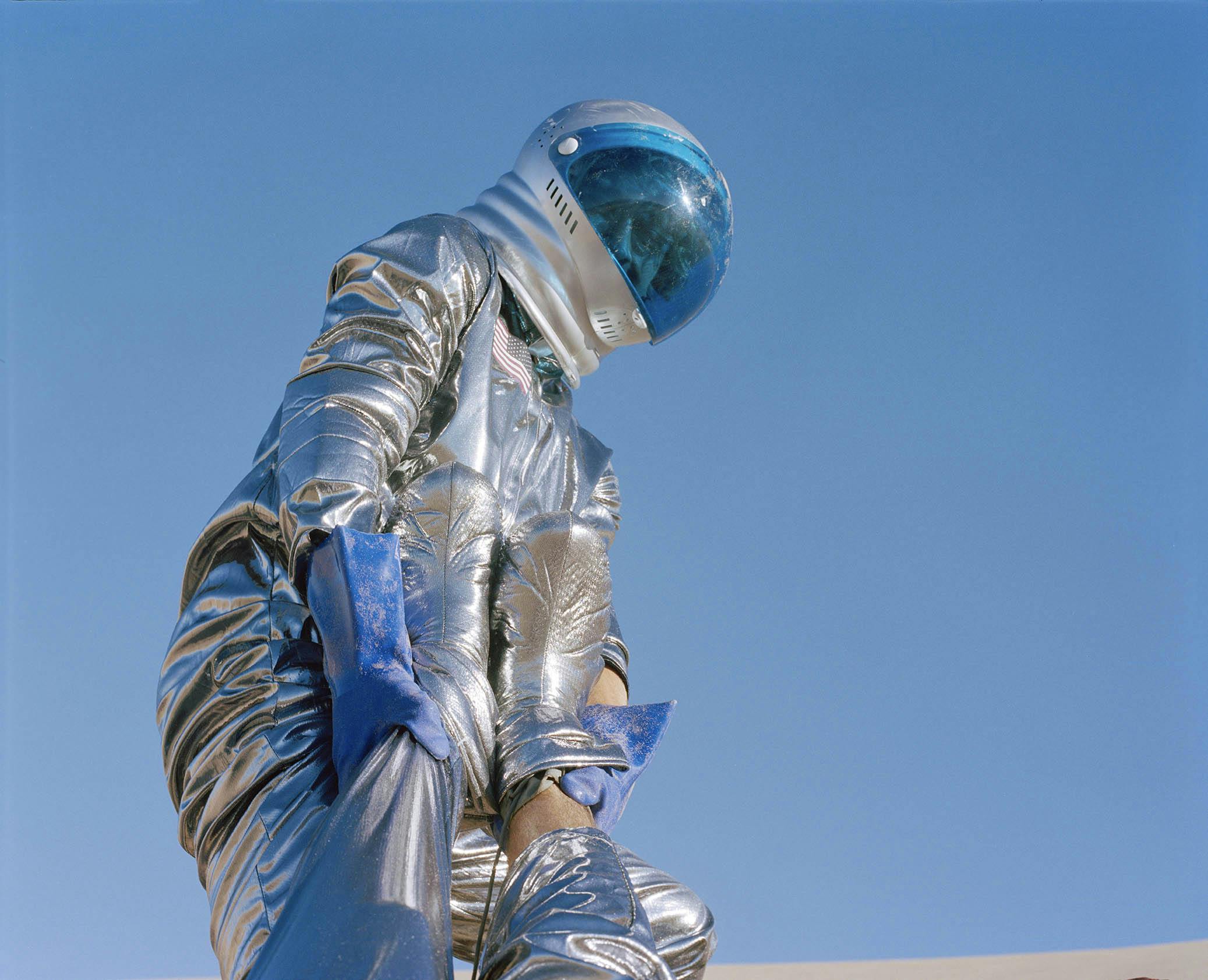
LA-based photographer Luke Sirimongkhon walks us through his latest series, Never How You Planet, and gives us insight into his thoughts, drive and process behind creating narrative imagery.
In his words:
Never How You Planet is the story of two lone astronauts, Officer Todd and Officer Daniel, who are traveling back from a distant universe when their spaceship crashes on an unknown planet.
Living during a time period where space travel has become an ordinary and mundane part of life, they explore these universes as if just running an errand – it’s nothing new or special to them.
After the spaceship crashes, it needs time to repair itself. While they wait, Todd and Daniel explore the planet in hopes of bringing something back to earth to have for research, or perhaps sell.
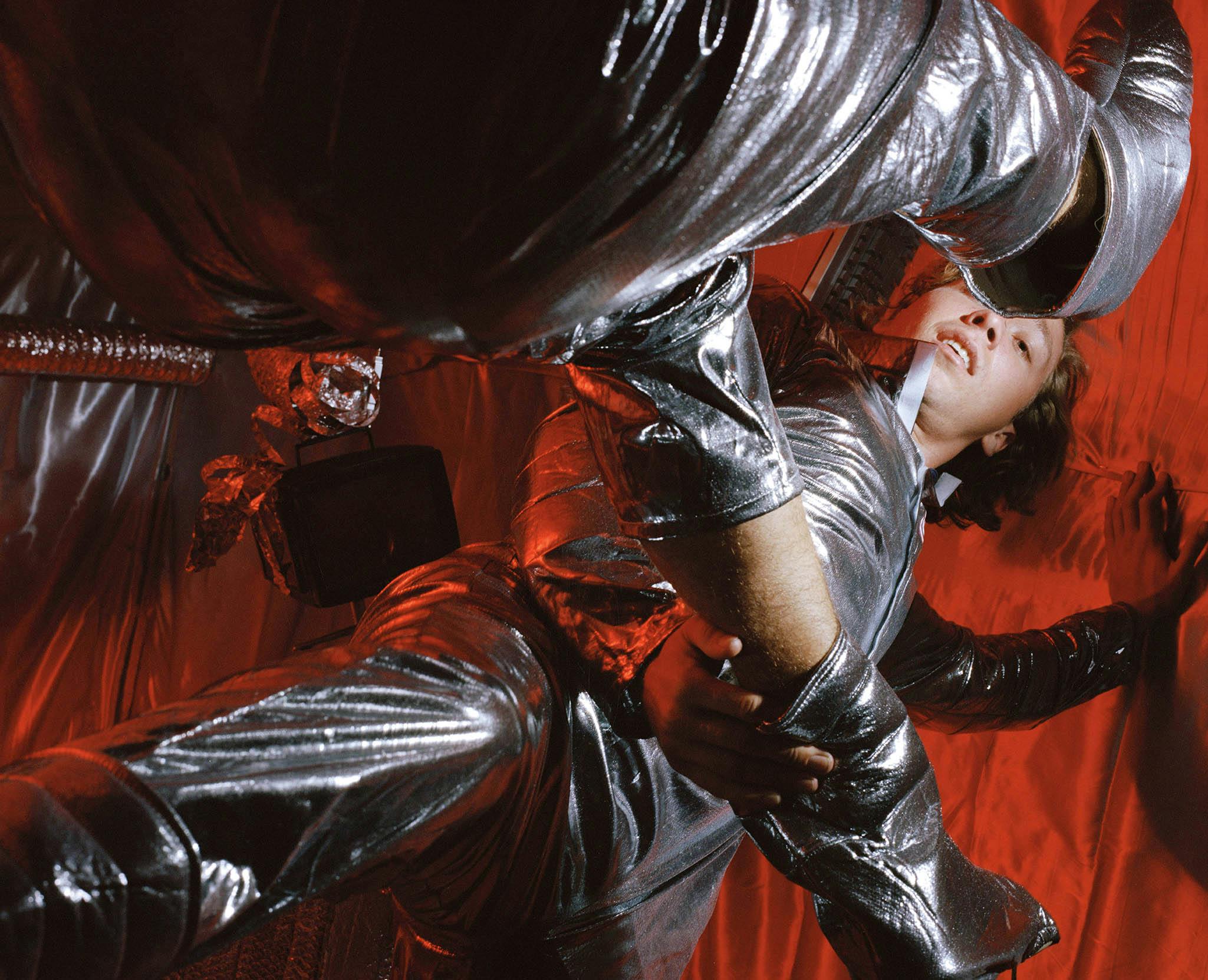
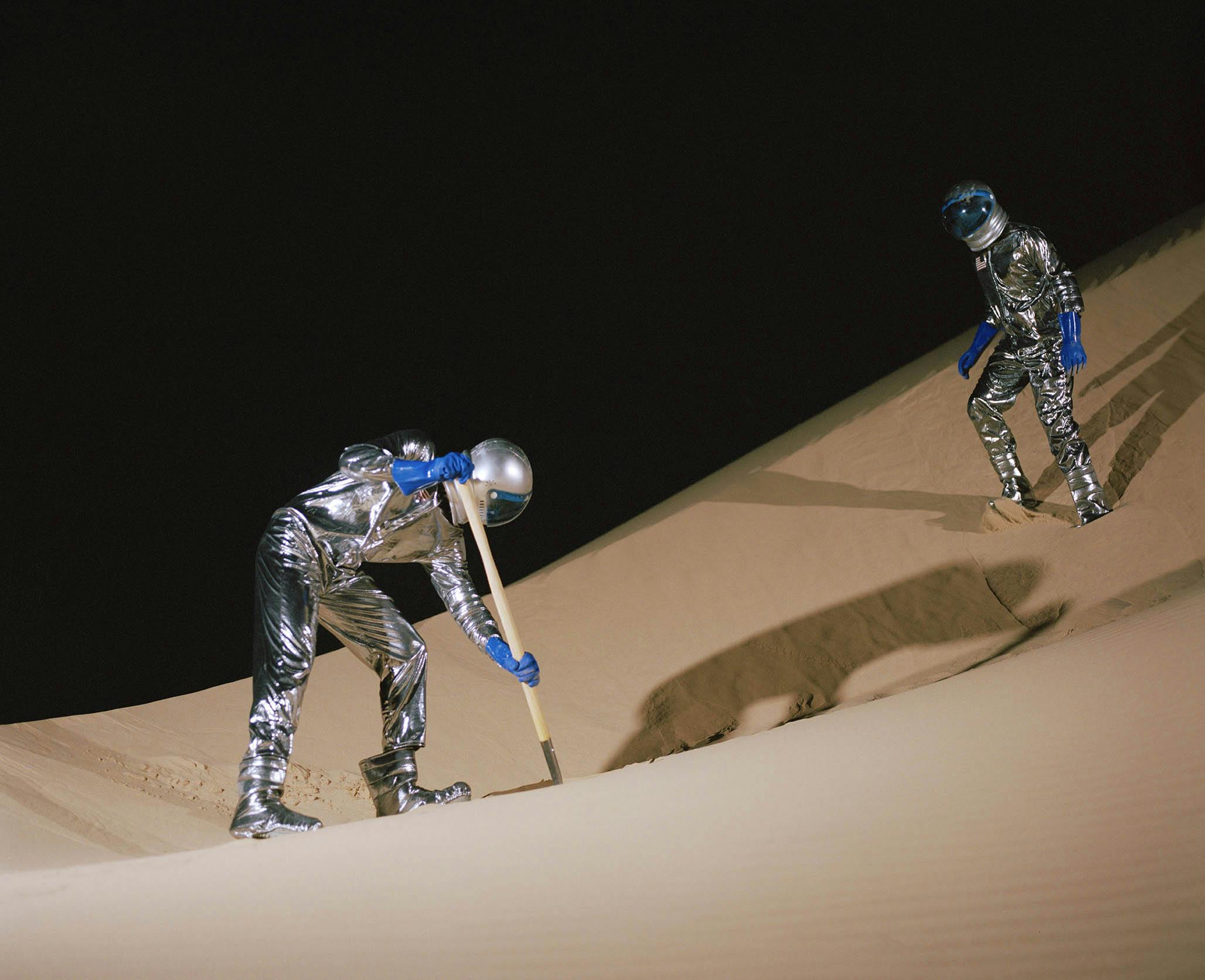
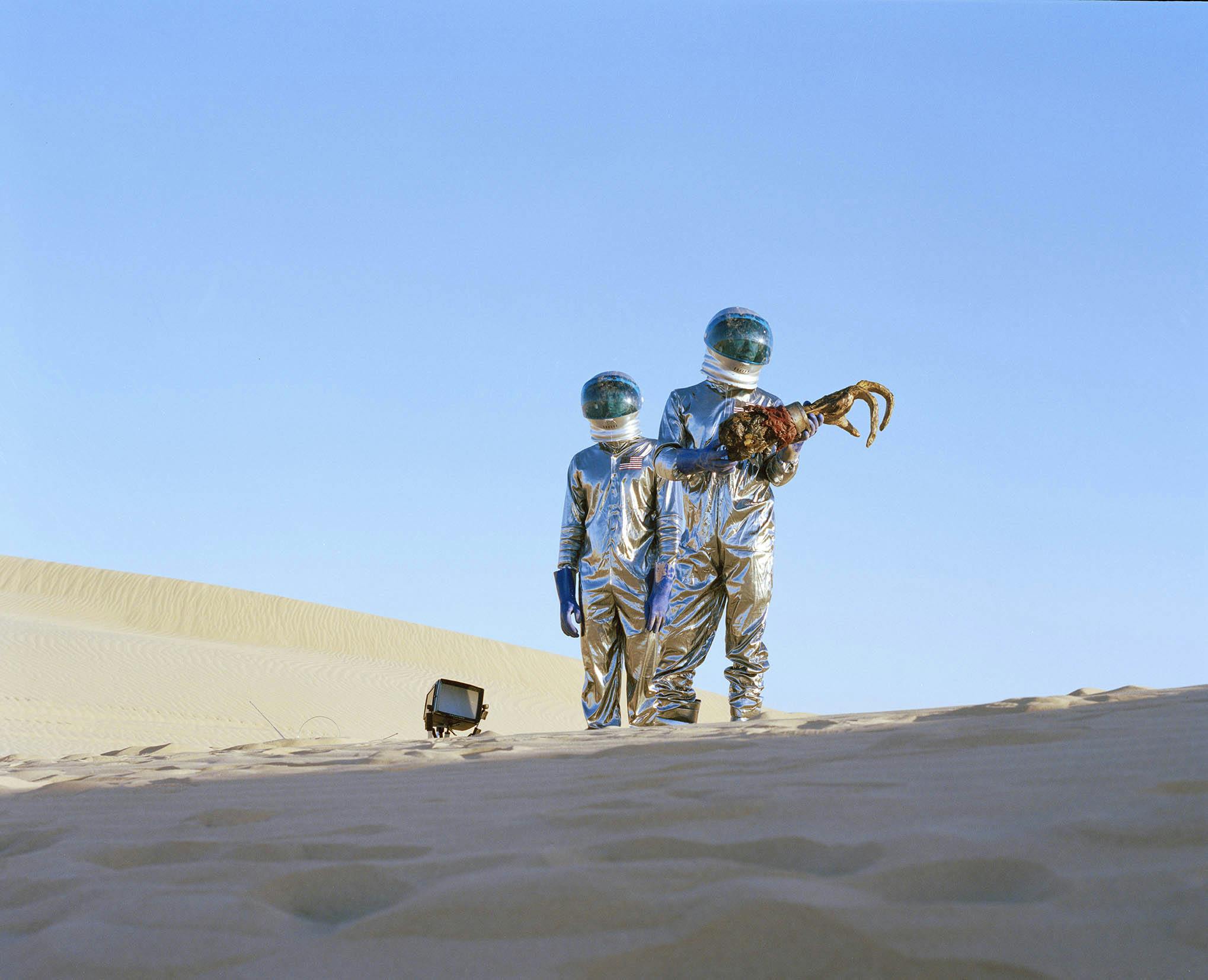
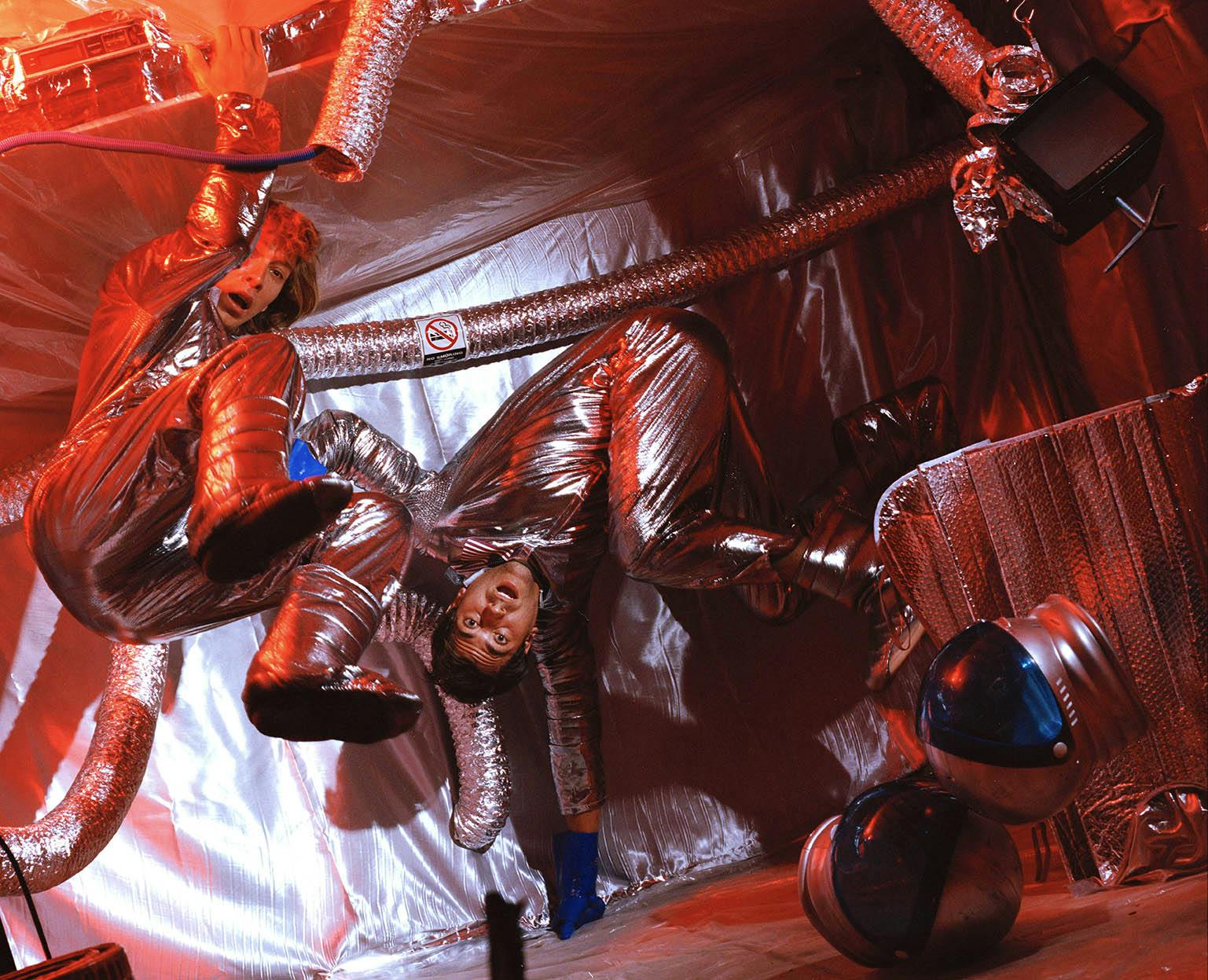
While out surveying and collecting data, they run into an alien overlord who is the decider on what lives and dies on the planet. That’s why the sand is so desolate, and nothing else exists. The alien overlord determines that only one of the astronauts truly needs to live in order to go back to relay all this information. It’s not a malicious kill from the alien’s perspective, it’s more of a necessity of -– okay, here you guys are on my planet and this is how things run and you are unimportant.
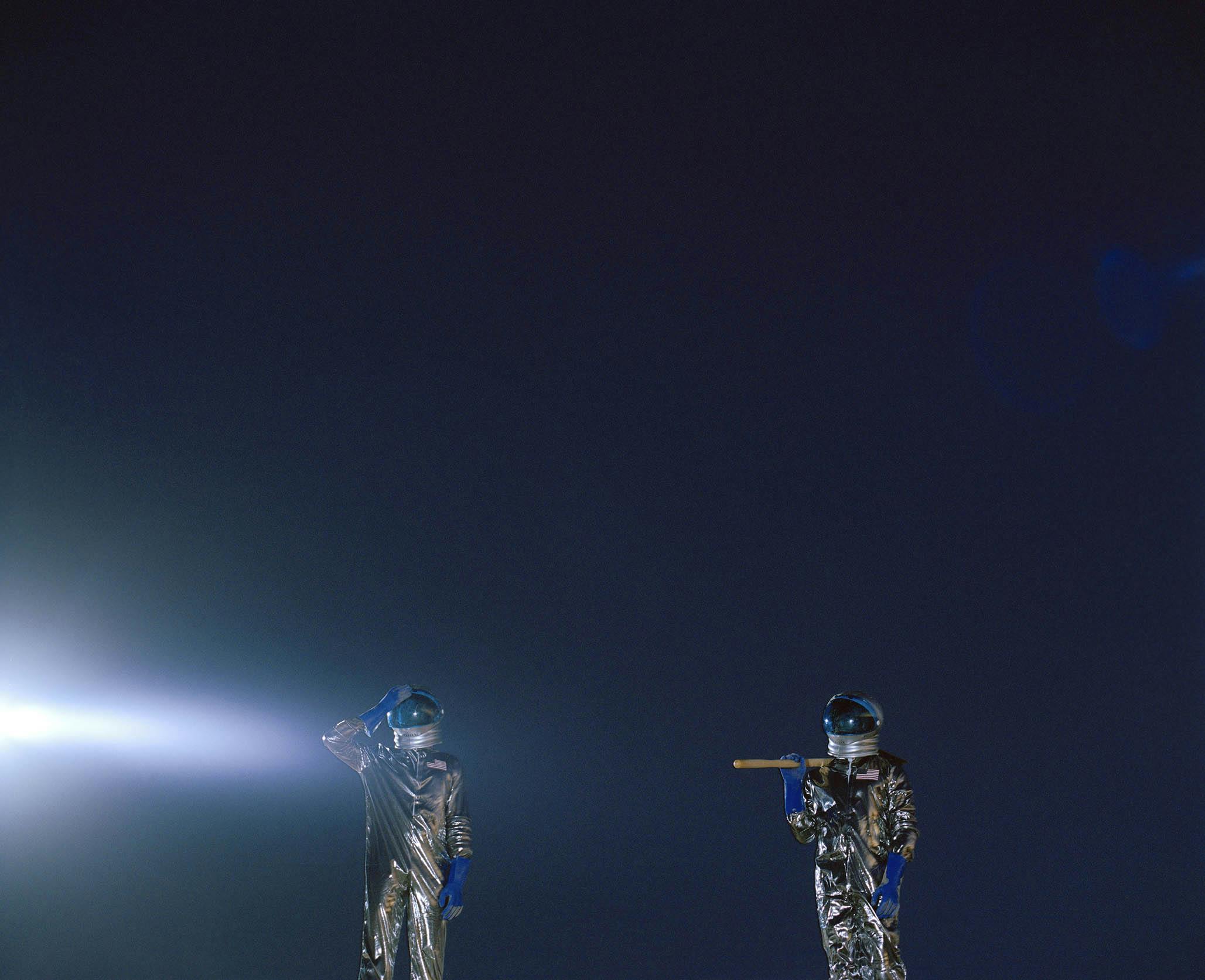
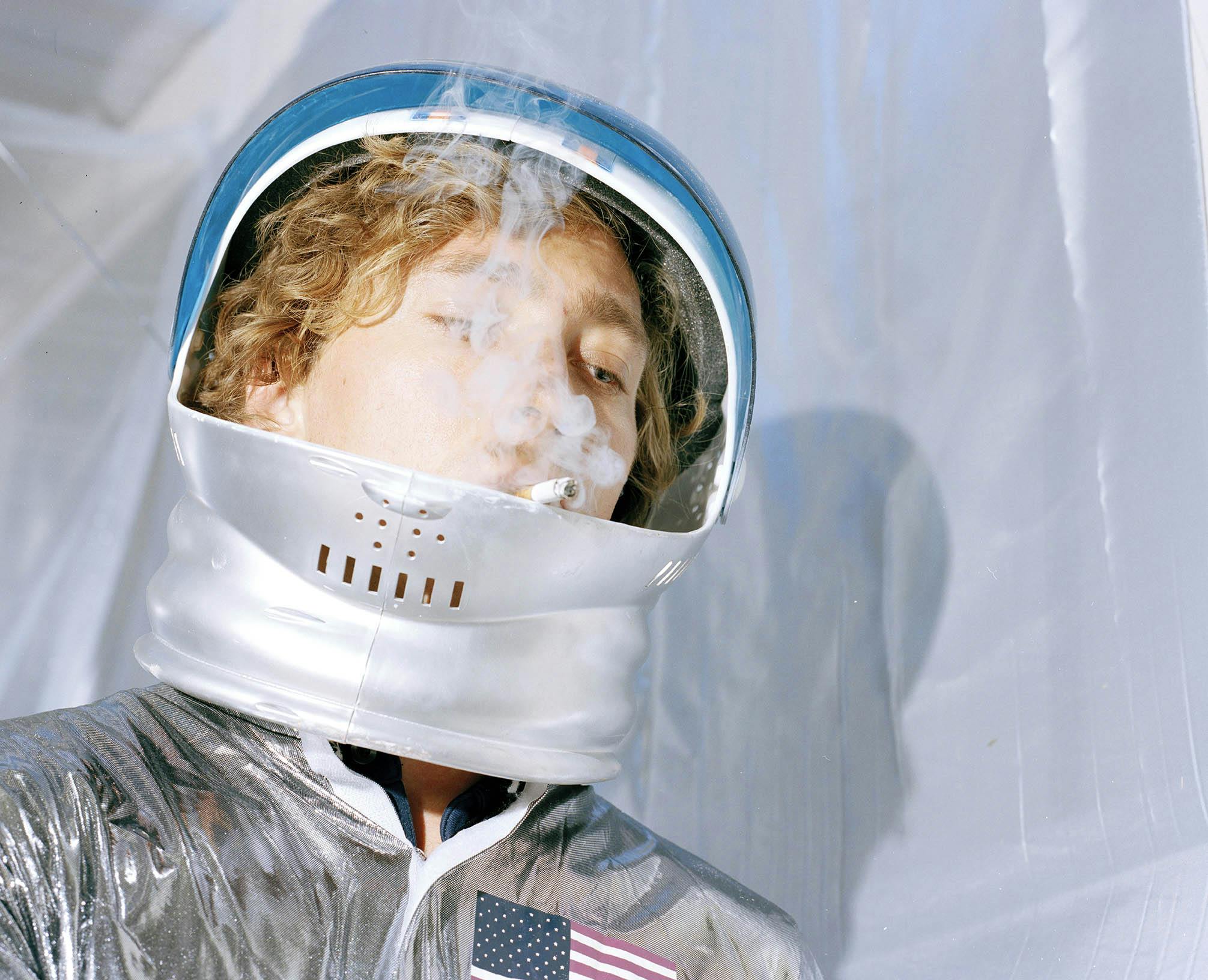
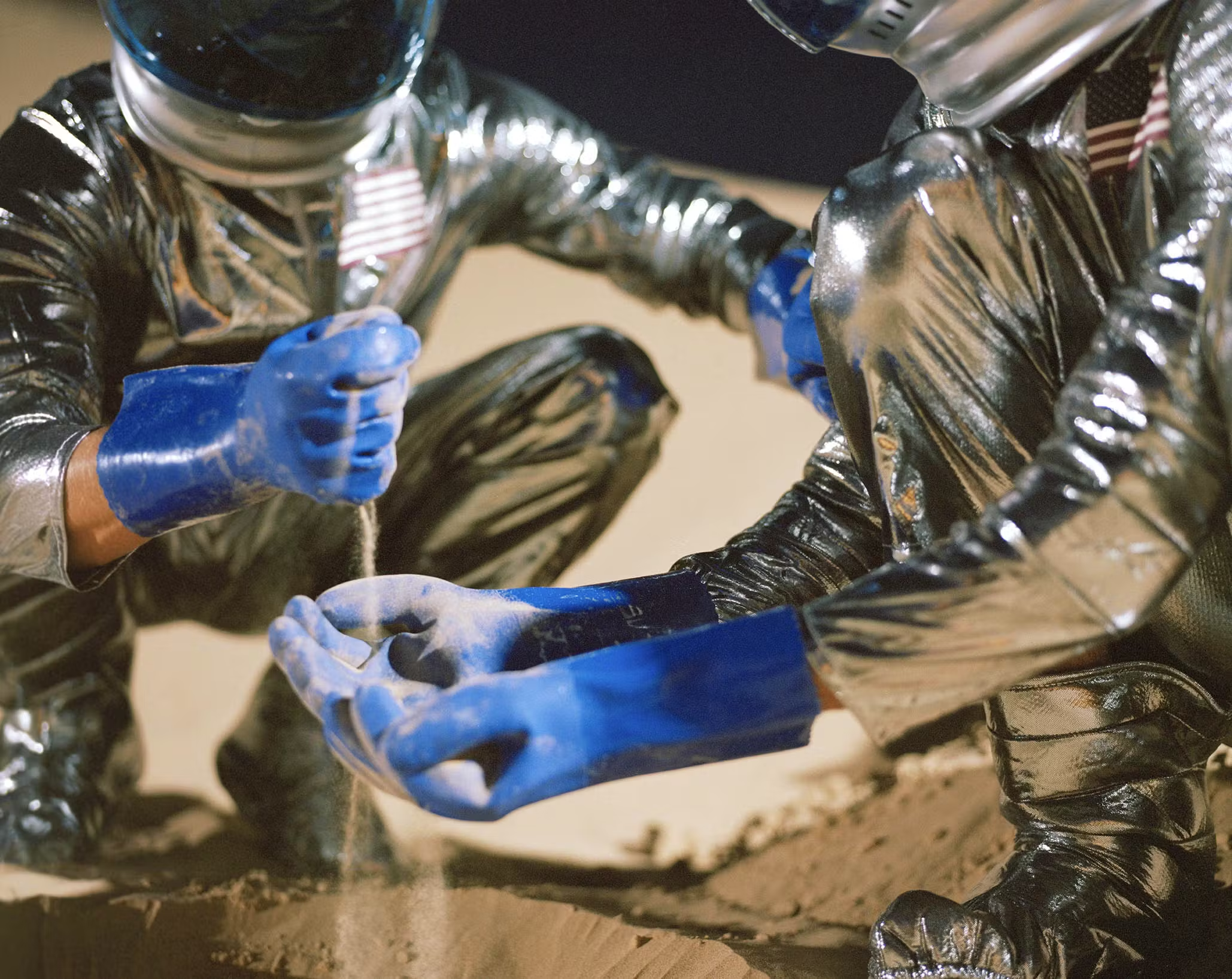

Todd dies. Daniel has to decide whether it’s more important to bring back the information or bring back his friend, unable to carry both back to the ship. He decides to leave him and take the found arm. It’s similar to the alien’s perspective – it’s not an evil thing, it’s just a necessity.
For the final shot, I had Daniel eating a PB&J sandwich, the simplest meal. He had just survived all this crazy shit, and I thought about how funny it would be for him to look like he’s not thinking about anything except that sandwich – it was all he could handle. It’s acceptance in a way.
Then Daniel flies home in the spaceship.

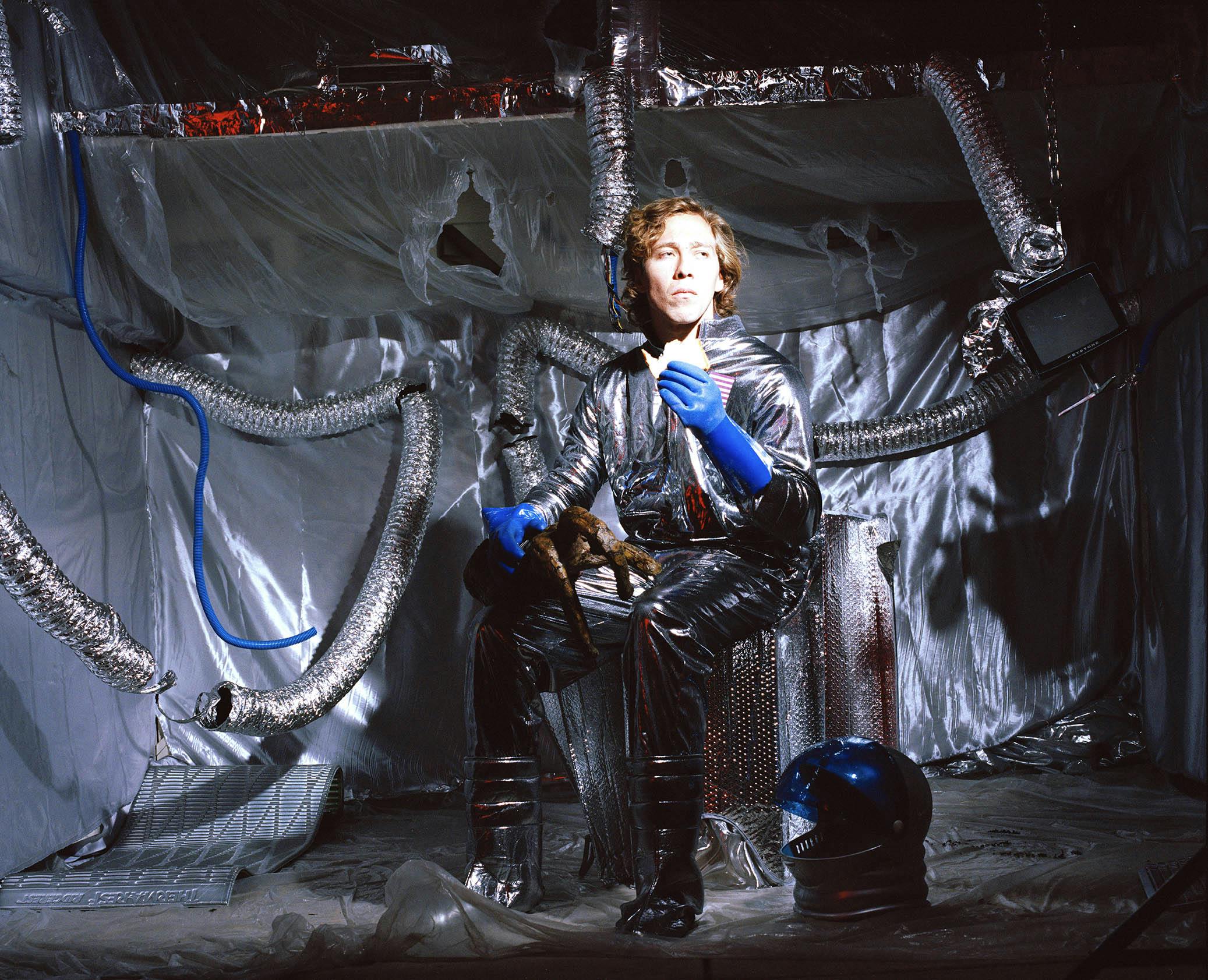
On lighting:
I knew the desert was going to be really bright so I got reflective space suits. We shot in the desert from 4 in the morning all the way until 11 am so that we could hit three different light set ups, but we also brought a profoto power pack to blast light at night to create long and harsh shadows while having a pitch black background. It produced a really crazy result.
Living in California you have access to some of the most beautiful places on earth, and they’re only a 2 or 3 hour drive away. It adds a level of production value without having to spend a lot of money. It’s actually awesome being broke and trying to create stuff - it forces you to be really, really creative and precise because there isn’t much room for error.
On Process:
In my own work, I’m trying to find different angles on how I approach photography by looking at other artists who aren’t photographers and figuring out how they look at things. For instance, Alexander McQueen. I had never thought about telling a narrative through clothes until I was introduced to his work.
I thought to myself, I want to do that in my photography.
I love shooting photographs, but I also love telling a story and through my work as a photographer, I put those two things together. I think the moment I realized that there are no rules, it was like BAM!
Building backstories and developing characters has been such a great new addition to the way I shoot. Getting to understand why the subjects are there in the first place and forming a story around a specific moment in time is slowly starting to become an integral part of my process.
Once I started this exploration, I began freeing myself from logical, factual drive – believing everything has to be a certain way. I started thinking “… but does it though??” Turns out, the answer no. Nothing has to make sense for it to make sense. It’s simply letting go of not just rules, but judgment. Do what you want.
